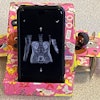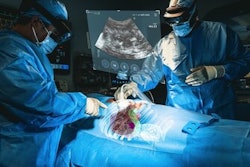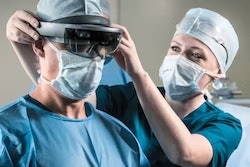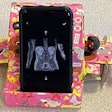Augmented reality is rapidly evolving in image-guided spinal surgery, but challenges still remain, according to a report published September 18 in Operative Techniques in Orthopaedics.
Researchers led by Antoinette Charles from Duke University in Durham, NC, found that this technology can provide surgeons the opportunity to achieve better anatomic approximation and increased precision, as well as better benefit patients. However, it still needs to overcome the hurdles of limited training, difficulty, and cost burden among others for the technology’s advanced imaging capabilities.
“Continued research, development, and collaboration between surgeons, engineers, and technology companies are essential to unlock the full potential of augmented reality in orthopedic surgery,” Charles and co-authors wrote.
Augmented reality, which incorporates virtual elements onto a user's real-world surroundings, has emerged in recent years as a potential method for improving outcomes and user experience for complex spinal surgeries. While reviews that evaluate the technology’s use in this area exist, the researchers noted that these don’t focus on in-depth patient outcomes or factors that play into the challenges associated with using augmented reality.
Charles and team members sought to summarize the different types of recent augmented reality studies in relation to spinal surgery. This includes evaluating the clinical outcomes and technical outcomes of the technology, as well as understanding its application in this area.
The team included 16 studies in its analysis. This included eight prospective cohort studies, three cross-sectional studies, two retrospective cohort studies, one prospective randomized control trial, one case series, and one retrospective case series. Two of the studies involved human cadavers, and one study focused on resident and attending surgeon performance. The team reported that the study duration ranged from two to 52 months with an average duration of 12.6 months.
The researchers found no reported intraoperative complications in the studies. They also found that two studies reported a length of stay ranging from 4.1 to 5.5 days. Additionally, one study found that the augmented reality surgery group had a significantly shorter length of stay compared with the control.
For technical outcomes, the team found that five of the total studies reported on the accuracy of screw placement, which ranged from 94.1% to 100%. Also, three of the studies examined registration error, with averages ranging from 0.84 mm to 1 mm. Another three studies reported lower radiation doses compared to the control.
Finally, the researchers investigated augmented reality’s applicability. They found that one study reported the cost of the technology, which ranged from $4,000 to $30,000 per year to purchase the head-mounted device and to use the related software. Six studies analyzed surgeon satisfaction and reported that surgeons overall enjoyed using the technology. However, the surgeons also reported mixed feelings on wearability and comfort. One study also indicated that using augmented reality led to significantly increased time in 3D image rendering.
The study authors suggested that based on the published literature, augmented reality can improve spinal surgery outcomes, as well as serve as a valuable educational tool. However, to overcome the current challenges, the technology will rely on more optimization for users, patients, and healthcare systems. The authors called for more evidence on augmented reality’s use and development, to be gathered in a standardized manner.
“Once this is established, more extensive multi-centered studies on this technology should be pursued,” they wrote. “Together, these considerations provide a multifaceted approach to improving the overall accessibility of augmented reality, which is critical to its eventual success and further implementation in spine surgery.”
The full report can be found here.









